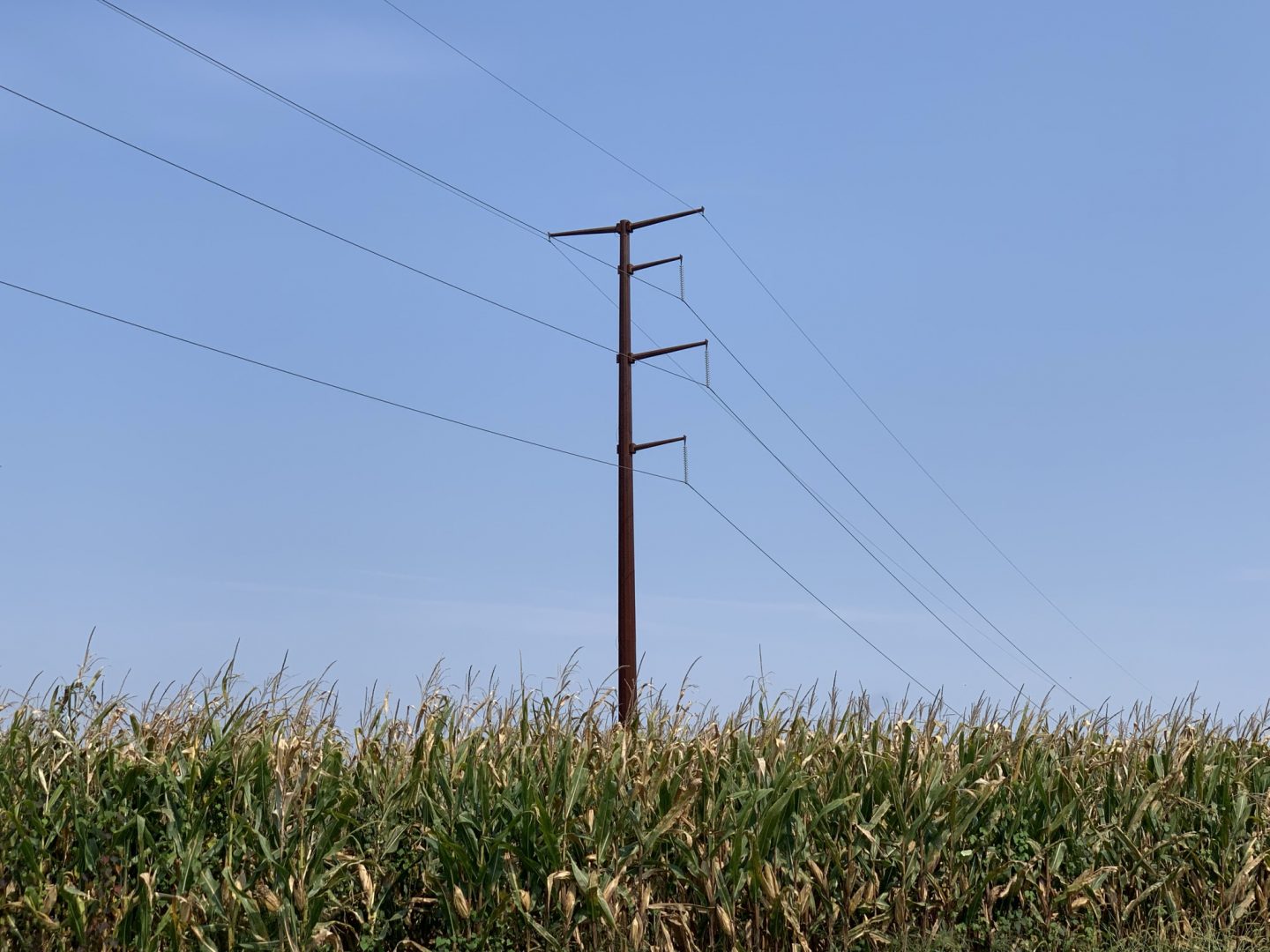
A transmission line stands in a cornfield in Chanceford Township, York County on Sept. 13, 2021.
Rachel McDevitt / StateImpact Pennsylvania


A transmission line stands in a cornfield in Chanceford Township, York County on Sept. 13, 2021.
Rachel McDevitt / StateImpact Pennsylvania

Rachel McDevitt / StateImpact Pennsylvania
A transmission line stands in a cornfield in Chanceford Township, York County on Sept. 13, 2021.
Listen here:
A federal regulator has come out with a rule meant to help new electricity suppliers connect to the grid more easily.
Advocates say it’s a first step in getting more renewables online, but some regional grid operators may fight the rule.
The Federal Energy Regulatory Commission’s latest rule on “Improvements to Generator Interconnection Procedures and Agreements” aims to cut a backlog of energy projects with measures such as studying new generators in groups, instead of one-by-one, and letting the first-ready connect to the grid, rather than waiting in line behind slower projects. It also aims to promote the use of grid-enhancing technologies that can be used to add capacity to existing transmission infrastructure.
“This new rule will enable America’s vast power generation resources to connect to the grid in a reliable, efficient, transparent, and timely manner, and in doing so, help provide more reliable, resilient, and affordable electricity for all consumers,” said FERC Chairman Willie Phillips.
PJM, the grid operator for the region that includes Pennsylvania, is asking FERC for clarification and rehearing on the rule, over concerns it could derail PJM’s recent plan to improve connection efficiency.
“In short, now, when PJM is ‘mid-flight’ with its new interconnection process, is not the time to require PJM to substantially re-tool its interconnection processes or to cause substantial uncertainty as to how to comply,” PJM wrote in a filing to FERC.
Advocates for clean energy noted there is still much work to be done.
Veronica Ung-Kono, a transmission policy specialist and attorney with the National Wildlife Federation, said the rule sets the floor for what’s needed.
“From a legal perspective, it is not creating an enforcement mechanism to force these different grid operators to use these technologies, unfortunately. But it is encouraging [operators to use the technologies],” she said.
Rob Gramlich, president of Grid Strategies, which works to bring more renewable energy onto the power grid, said the rule is meaningful in updating protocols and reducing inefficiencies.
But, he said, it’s only a partial solution to part of the problem. Gramlich said limited transmission capacity makes up the majority of the issue. He’s looking forward to a proposed rule at FERC that aims to tackle new transmission planning. That could be finished in the next year.
“And that’s just the rule, then you have to do the actual plans in every region, and we haven’t even started talking about the interregional transmission,” Gramlich said. “So, we’re getting more and more behind.”
Researchers at Princeton University say wind and solar energy need to grow rapidly and that the country may need to triple its electric grid capacity by 2050 in order to reach clean energy goals meant to slow catastrophic warming.
FERC’s chairman said more than 2,000 gigawatts of generation and storage were waiting in interconnection queues across the country at the end of last year, which is as much electricity generation capacity as all the power plants now operating in the U.S. Projects face a 5-year wait, on average, to connect to the grid.
Ung-Kono said good planning will be key to unlocking clean energy while protecting communities and wildlife.
She said bad planning and design could fragment habitat for animals and disrupt migration corridors, which could lead to a loss of biodiversity.
Ung-Kono and Gramlich are both looking to the regulatory space for electric transmission improvements. Gramlich said Congress might get involved, though it may be hard to find agreement with the current political make-up.
Sen. John Hickenlooper (D-Colo.) and Rep. Scott Peters (D-Calif.) are sponsoring legislation known as the BIG WIRES Act. It aims to increase electricity reliability and make a more cohesive grid by requiring regional grids to be able to transfer at least 30% of their peak demand between regions.
StateImpact Pennsylvania is a collaboration among WITF, WHYY, and the Allegheny Front. Reporters Reid Frazier, Rachel McDevitt and Susan Phillips cover the commonwealth’s energy economy. Read their reports on this site, and hear them on public radio stations across Pennsylvania.
(listed by story count)
StateImpact Pennsylvania is a collaboration among WITF, WHYY, and the Allegheny Front. Reporters Reid Frazier, Rachel McDevitt and Susan Phillips cover the commonwealth’s energy economy. Read their reports on this site, and hear them on public radio stations across Pennsylvania.
Climate Solutions, a collaboration of news organizations, educational institutions and a theater company, uses engagement, education and storytelling to help central Pennsylvanians toward climate change literacy, resilience and adaptation. Our work will amplify how people are finding solutions to the challenges presented by a warming world.